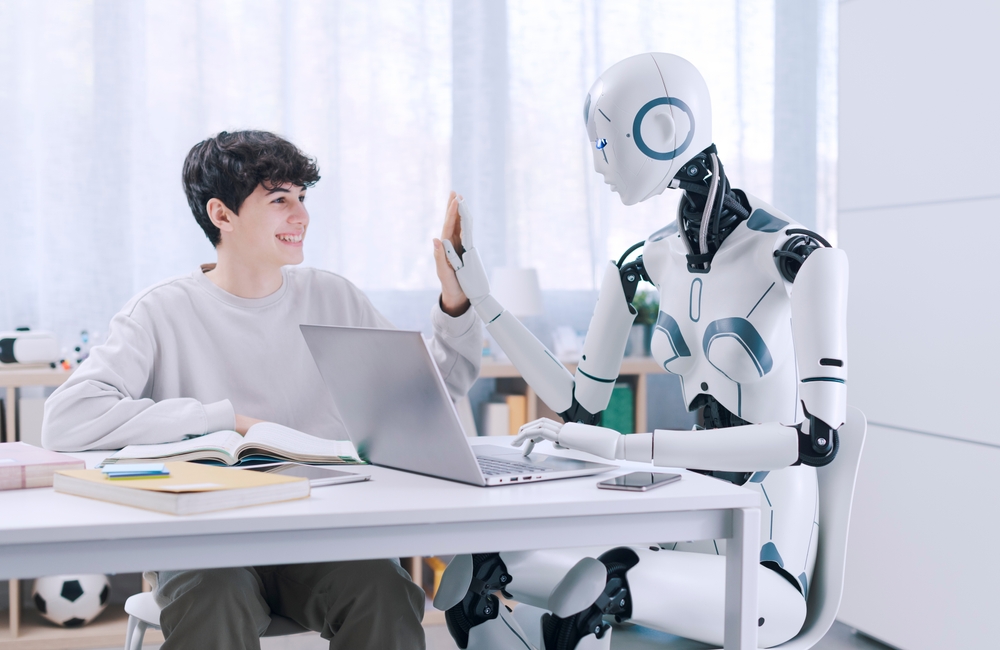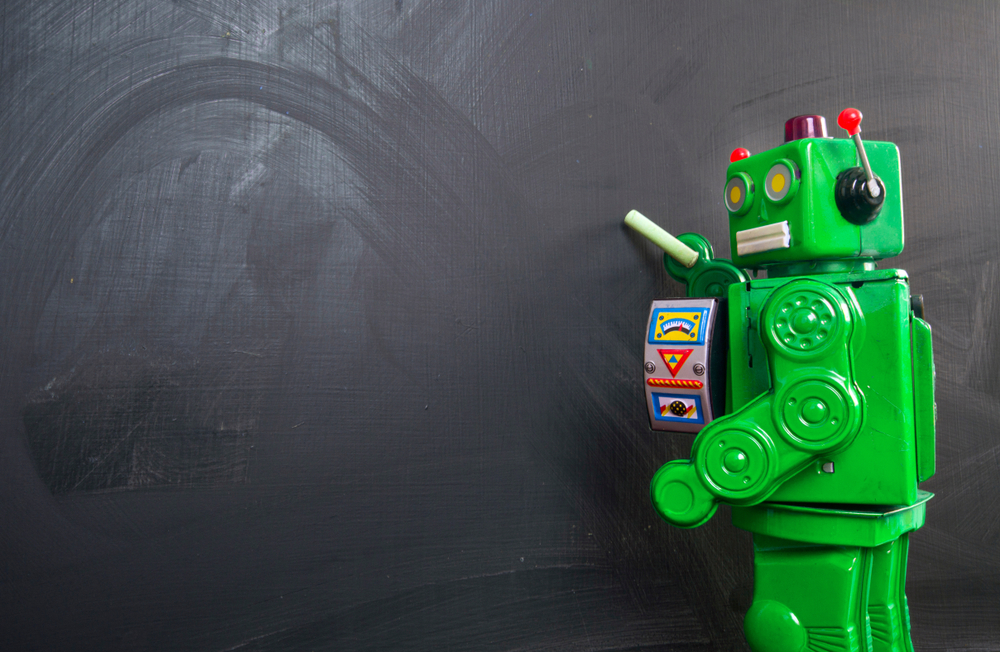
In a world where technology is advancing at rapid rates, the education sector is benefitting from the cutting-edge technological advancements of the digital space. From the use of artificial intelligence to aid learning, to specialized educational robotics, children across the world are experiencing the technology of the future, inspiring them to explore the world of innovative tech discoveries.
Particularly in recent years, the emergence of artificial intelligence and educational robotics has captivated the attention of both education providers and their pupils, exploring the boundaries of these types of advanced software and immersing themselves in a realm of pioneering technology.
As educational robotics continues to increase in prevalence, so does curiosity surrounding the true possibilities of using robots in educational facilities such as schools and universities. With this in mind, how far can we actually take the use of robots in schools? Is it possible that one day robots will replace teachers altogether?
In this article, we explore the uses of educational robots along with their benefits and limitations.
Based in Dubai, the School for Modern Skills boasts exceptional academic facilities and a school built on the values of technology, creativity, and innovation. For more information on what we do and how we can help your child strive for success, get in touch today.
How Do Educational Robotics Work?
Robots are being developed with educational purposes in mind, having the ability to facilitate learning across many subjects- creating an interactive and fun way for students to learn. The use of educational robotics offers children a unique learning experience where critical thinking, interaction, and problem-solving skills are nurtured and developed for their future.
The nature of educational robotics relates closely to STEM subjects such as science, technology, engineering, and mathematics. Across the world, STEM subjects are highly sought-after career paths with specific experience required to progress. By using robotics, students are further exposed to the use of STEM, with the potential to ignite a passion from a young age.
What Are the Benefits of Using Robots in Education?

Where the digital age is more rife than ever, it is important to understand how using educational robotics can benefit both students and teachers across the world. Below are several benefits of robots making an appearance in educational facilities.
- Adopting critical thinking and problem-solving skills– the use of robots allows children to use many motor skills including decision-making, problem-solving, and critical thinking. These skills are incredibly useful throughout life and highly beneficial in future careers.
- An introduction to practical STEM skills– Robots are built on the foundations of STEM-based technology and skills. By exposing children to STEM subjects from a young age, there is a potential to spark passion to pursue STEM careers.
- Promotes teamwork– Considered to be an essential life skill, teamwork is greatly encouraged through the collaborative nature of learning alongside robots.
- Makes students more tech-savvy– in this digital age, technology skills are important across all sectors both in and out of work. By using robots at the height of technological advancement, students are gradually exposed to beneficial technology skills.
- Ignites creativity– educational robotics allow students to develop creative and innovative ways of learning and thinking.
What Are the Limitations of Educational Robotics?
Whilst there are many benefits to the use of robots within schools, there are also many limitations to consider in order to weigh up the pros and cons of the wider use of robotic technology in educational facilities.
Emotional and Social Implications
Whilst robots create a vibrant and interactive learning environment for students, it is not clear that robotics can acquire the same level of emotional and social intelligence. Teaching is more than education, there are matters including safeguarding, emotional support, and social interaction- this is where teachers go above and beyond for their students to ensure their social and emotional wellbeing is taken care of. Moreover, education is more than academic.
Data and Privacy Concerns
By introducing educational robotics into schools, there are certain data and privacy policies that could become vulnerable as the software of robotic education develops further. The use of modern technology as such should always be considered in line with the schools’ individual policies and legislation for General Data Protection Regulations (GDPR).
Adaptability
Part of being a teacher is the expectation of everything being different. Each day will vary and teachers are always trained and equipped to deal with any type of unexpected situation. For example, a child who becomes unwell or a scenario requiring discipline or a sanction to reinforce the consequences of not following school rules and expectations.
Loss of Jobs
If robots become more advanced and widely used, it could be that many teachers are no longer required and may lose their jobs. If this becomes the case, it could have a direct impact on the teaching profession as a whole.
Are Robots Able to Build Relationships with Students?

In short, no, robots do not have the type of technological advancement to build relationships with students in the same way a human teacher can. While robots can educate children in an innovative and creative way, they do not have the ability to decipher whether a child has understood what they are explaining to them.
In addition, robots cannot get to know children based on their behavior and personalities, they can only do so by establishing ability and learning patterns based on computerized algorithms. With this being said, children will not benefit from any social and emotional support that allows them to learn comfortably.
How are Robots Already Being Used in Schools?
There are many ways that robotics is already being used in educational settings. Some of these include:
- Teaching assistants aiding teachers with basic tasks
- Helping to keep students engaged and motivated
- Administrative support
- Assistance in language teaching and learning
- STEM Education
- Individual tutoring of students
As mentioned above, there are multiple uses for educational robotics already active in schools across the world. It is clear from the advancement of technology that robots will continue to develop and acquire the ability to effectively handle many more complex tasks in the near future across many sectors including education, manufacturing, healthcare, and retail, to name a few.
In Summary
In summary, educational robotics has increased in prevalence over recent years and has since enticed many educational facilities with its benefits to both teaching staff and students alike. Despite the copious benefits, there are many limitations that mean robots cannot directly replace teaching staff and still provide the same, authentic educational experience required for the best chance of academic success.
Robots are unable to understand and meet the needs of students on a social and emotional level. Therefore, rather than replacing human teaching staff altogether, it seems more beneficial for the robotic software to be used alongside the employment of human teachers for an immersive educational experience led by modern technology.
School for Modern Skills
Here at School for Modern Skills, we are extremely excited by the prospect of educational robotics. As a school, we have participated in the Matatalap Robotics Competition and continue to develop our very own robotics program.
At the heart of our school are our students and we strive to offer them the very best educational experience combined with sports facilities, medical care and transportation for a seamless educational journey.
Our dedicated teaching staff works across our high-quality facilities to provide exceptional levels of teaching. Moreover, our students have access to an onsite IHub for further immersive learning. As a technology-centred school, we have access to AI-based learning platforms with an exclusive partnership with local universities, allowing our students to learn the benefits and opportunities of artificial intelligence.
For more information on our admissions procedure, get in touch with us today to take the next step toward your child’s academic success story.
